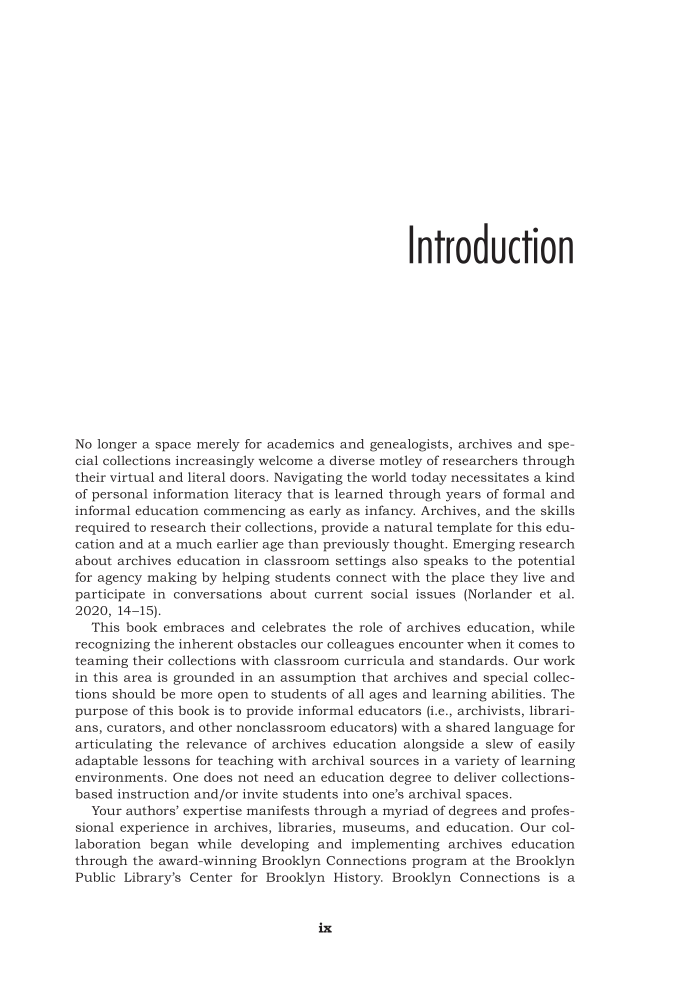ix Introduction No longer a space merely for academics and genealogists, archives and spe- cial collections increasingly welcome a diverse motley of researchers through their virtual and literal doors. Navigating the world today necessitates a kind of personal information literacy that is learned through years of formal and informal education commencing as early as infancy. Archives, and the skills required to research their collections, provide a natural template for this edu- cation and at a much earlier age than previously thought. Emerging research about archives education in classroom settings also speaks to the potential for agency making by helping students connect with the place they live and participate in conversations about current social issues (Norlander et al. 2020, 14–15). This book embraces and celebrates the role of archives education, while recognizing the inherent obstacles our colleagues encounter when it comes to teaming their collections with classroom curricula and standards. Our work in this area is grounded in an assumption that archives and special collec- tions should be more open to students of all ages and learning abilities. The purpose of this book is to provide informal educators (i.e., archivists, librari- ans, curators, and other nonclassroom educators) with a shared language for articulating the relevance of archives education alongside a slew of easily adaptable lessons for teaching with archival sources in a variety of learning environments. One does not need an education degree to deliver collections- based instruction and/or invite students into one’s archival spaces. Your authors’ expertise manifests through a myriad of degrees and profes- sional experience in archives, libraries, museums, and education. Our col- laboration began while developing and implementing archives education through the award-winning Brooklyn Connections program at the Brooklyn Public Library’s Center for Brooklyn History. Brooklyn Connections is a
Document Details My Account Print multiple pages
Print
You have printed 0 times in the last 24 hours.
Your print count will reset on at .
You may print 0 more time(s) before then.
You may print a maximum of 0 pages at a time.























































































































































































